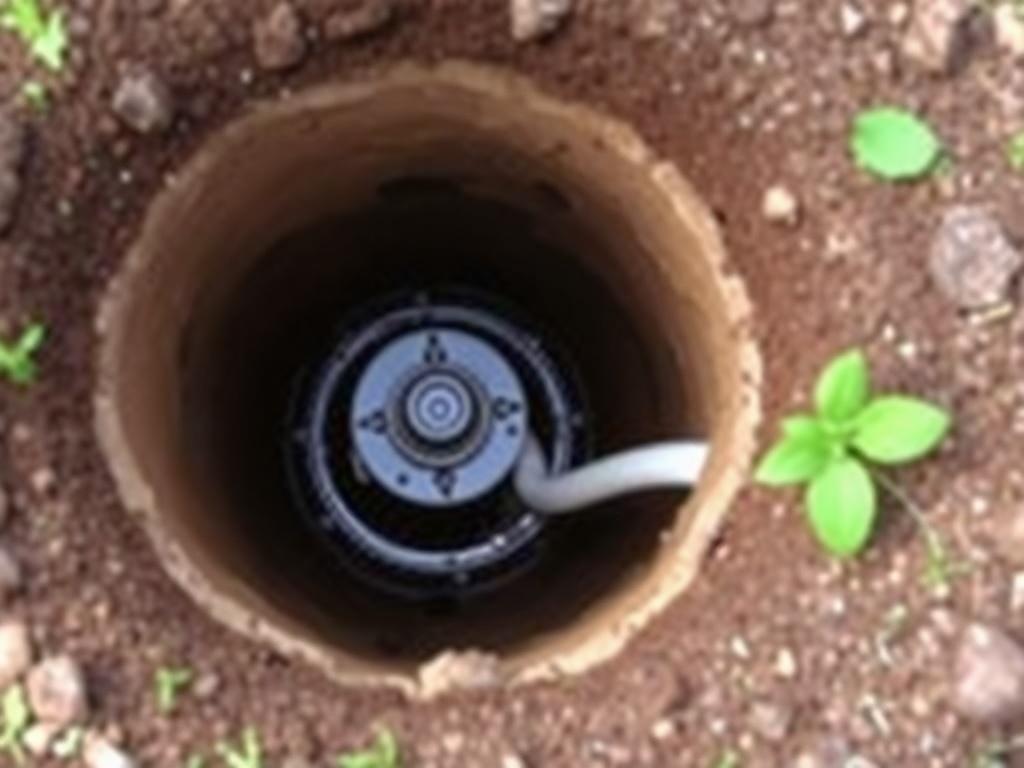Septic tanks are essential components of many homes, especially in rural or suburban areas where municipal sewage systems are not available. They provide a private wastewater treatment solution, but like any system, they require proper care and maintenance to function smoothly. One of the most frustrating and potentially hazardous problems homeowners can face is a septic tank backup. When this happens, sewage can flood your home or yard, posing health risks and costly repairs. Understanding how to prevent septic tank backups is vital to protect your property, your family, and your peace of mind. This comprehensive guide will walk you through everything you need to know to keep your septic system working efficiently for years to come.
- What Is a Septic Tank Backup?
- Common Causes of Septic Tank Backups
- Step-by-Step Guide: How to Prevent Septic Tank Backups
- 1. Regular Septic Tank Inspections and Pumping
- 2. Use Water Efficiently
- 3. Proper Disposal of Waste and Chemicals
- 4. Protect the Drain Field
- 5. Address Repairs Promptly
- Signs You Might Have a Septic Tank Backup
- DIY Tips vs. Professional Help
- Innovations and Products That Help Prevent Septic Tank Backups
- Environmental Factors Affecting Septic Tank Performance
- Cost Implications of Septic Tank Backups
- Frequently Asked Questions About Preventing Septic Tank Backups
- How often should I pump my septic tank?
- Can I use chemical additives to prevent backups?
- What household items should never go into the septic tank?
- Will planting grass over the drain field help?
- Summary Table: Key Preventive Measures for Septic Tank Backups
- Conclusion
What Is a Septic Tank Backup?
Septic tank backups occur when wastewater fails to flow properly through the septic system and instead flows back into your home’s plumbing fixtures or onto the surface of your property. This can happen in sinks, toilets, bathtubs, or showers and is often accompanied by foul odors and slow drains. Backups are caused by blockages, system failures, or sometimes environmental factors, and they require immediate attention to prevent significant damage.
Understanding how septic tanks work is the first step in preventing backups. Wastewater from your home flows into the tank, where solids settle to the bottom as sludge, oils float to the top as scum, and the middle layer exits into the drain field as clarified water. Problems arise when the tank is full, or the drain field becomes clogged, leading to system overload and backups.
Common Causes of Septic Tank Backups
To effectively prevent septic tank backups, it’s important to recognize the typical causes. By identifying these, you can avoid them or address issues before they lead to a backup.
- System Overload: Excessive water use in a short period can saturate the septic system, causing it to back up.
- Improper Disposal of Waste: Flushing non-biodegradable items or introducing harmful chemicals can damage the septic system.
- Lack of Maintenance: Failure to pump the tank regularly leads to sludge buildup that clogs the system.
- Tree Root Intrusions: Roots can infiltrate pipes and the drain field, disrupting flow.
- Drain Field Issues: Compacted soil, flooding, or damage can prevent wastewater absorption.
- Pipe Blockages: Blocked inlet or outlet pipes cause flow obstruction and backflow.
Awareness of these causes helps homeowners be proactive and avoid practices that might trigger a backup.
Step-by-Step Guide: How to Prevent Septic Tank Backups
Prevention is always better than dealing with a messy septic tank backup. Here’s a detailed, clear plan to help you protect your septic system effectively.
1. Regular Septic Tank Inspections and Pumping
Routine inspections and timely pumping are among the most crucial steps for preventing septic tank backups. Experts recommend having your septic tank inspected every 3 years, with pumping every 3 to 5 years, depending on the tank size and household use. During an inspection, professionals assess sludge levels, scum thickness, and overall system health.
- Why Pumping Matters: Pumping removes accumulated sludge and scum that reduce the tank’s capacity and clog the drain field.
- What Happens If You Don’t: Sludge and solids can overflow into the drain field, causing clogs and backups.
Mark these routine maintenance dates on your calendar to avoid neglect.
2. Use Water Efficiently
Excess water overwhelms the septic system. Spreading out laundry loads, fixing leaks promptly, and installing water-efficient fixtures can significantly reduce water entering the septic tank.
| Practice | Benefit |
|---|---|
| Install low-flow toilets and showerheads | Reduce water volume, prevent system overload |
| Fix leaking faucets and toilets | Prevent constant water flow to the tank |
| Space out laundry days | Allow time for system drainage |
Being mindful about water use helps maintain optimal function and prevents backups induced by system saturation.
3. Proper Disposal of Waste and Chemicals
Septic systems are designed to break down typical household waste, but certain products can seriously hinder the system.
- Avoid Flushing: Items like baby wipes, feminine hygiene products, diapers, cigarette butts, and paper towels do not break down and cause blockages.
- Limit Chemicals: Harsh chemicals such as paint thinner, motor oil, pesticides, antifreeze, and antibacterial soaps kill beneficial bacteria vital for decomposition in the septic tank.
- Use Septic-Safe Products: Opt for biodegradable, septic-safe cleaning agents and personal care products.
Managing what goes into your septic system is critical to preventing blockages and preserving the bacterial environment.
4. Protect the Drain Field
The drain field, or leach field, is the area where treated wastewater is dispersed into the soil. Protecting this part of your septic system is important to avoid backups.
- Do Not Park or Drive Over: Vehicles compact the soil and crush pipes.
- Avoid Planting Trees Nearby: Tree roots can invade drainage pipes, causing clogs and damage.
- Keep the Area Clear: Ensure the drain field surface is free of excess mulch, debris, or structures.
Simply maintaining a safe perimeter around your drain field can prevent expensive repairs and backups caused by drain field failure.
5. Address Repairs Promptly
If you notice slow drainage, foul odors, wet patches in your yard, or gurgling sounds in plumbing, these can be early signs of a septic problem. Don’t delay in calling a professional. Small issues can escalate quickly into full system backups requiring extensive repairs.
Signs You Might Have a Septic Tank Backup
Early detection is your first line of defense. Look out for these warning signs:
- Slow draining sinks, toilets, or bathtubs
- Gurgling noises in plumbing fixtures
- Unpleasant sewage odors around the home or yard
- Pooling water or soggy soil around the drain field
- Unusually green grass or growth over the drain field
If you experience one or more of these symptoms, it’s time to act before a complete backup occurs.
DIY Tips vs. Professional Help

Being proactive with simple home maintenance can reduce septic problems; however, some tasks are best left to professionals.
| DIY Tasks | Professional Tasks |
|---|---|
| Monitor water use and repair leaks | Inspect and pump the septic tank |
| Properly dispose of waste | Clean or replace pipes and filters |
| Educate household members | Diagnose and repair drain field problems |
Understanding your limits avoids creating bigger problems and ensures your system lasts longer without backups.
Innovations and Products That Help Prevent Septic Tank Backups

Technology and new products can aid in septic system maintenance.
- Septic Tank Alarms: Devices that alert you when water levels in the tank rise unusually high.
- Bio-Additives: Use with caution; some products claim to improve bacterial activity.
- High-Quality Filters: Installing effluent filters helps keep solids from reaching the drain field.
- Water Sensors: Smart home devices that monitor water usage and detect leaks.
While not substitutes for proper care, these tools can add a layer of security against unexpected backups.
Environmental Factors Affecting Septic Tank Performance

Your septic system doesn’t operate in isolation from the environment.
- Heavy Rainfall and Flooding: Excess water can saturate the drain field.
- Soil Type: Clay-heavy soils drain poorly causing system backup risks.
- Seasonal Changes: Frozen ground in winter hampers absorption in the drain field.
Understanding your property’s location and environment helps tailor your septic care plan appropriately.
Cost Implications of Septic Tank Backups
Ignoring septic maintenance and backups can lead to expensive repairs and health hazards.
| Issue | Approximate Cost | Notes |
|---|---|---|
| Septic Tank Pumping | $250-$500 | Routine maintenance cost |
| Repairing Drain Field | $1,000-$5,000+ | Depends on size and damage severity |
| Full Septic System Replacement | $3,000-$10,000+ | Most costly option, avoidable with care |
| Cleaning Sewer Backups | $500-$1,200 | Includes cleanup, odor removal, and minor repairs |
Regular maintenance is a small price to pay compared to the disruption and expense of a septic backup.
Frequently Asked Questions About Preventing Septic Tank Backups
How often should I pump my septic tank?
Most experts recommend every 3 to 5 years, but it depends on the size of your tank and household water use.
Can I use chemical additives to prevent backups?
Most professionals advise against chemical treatments as they can upset the bacterial balance and potentially damage the system.
What household items should never go into the septic tank?
Avoid flushing baby wipes, feminine hygiene products, paper towels, dental floss, grease, and harsh chemicals.
Will planting grass over the drain field help?
Yes, grass is ideal because it prevents erosion and absorbs water without damaging the system like trees or shrubs can.
Summary Table: Key Preventive Measures for Septic Tank Backups
| Preventive Measure | Description | Frequency |
|---|---|---|
| Regular Pumping | Remove sludge and scum buildup | Every 3-5 years |
| Water Conservation | Reduce system overload | Ongoing |
| Proper Waste Disposal | Prevent pipe and field clogging | Ongoing |
| Inspect and Maintain Drain Field | Protect soil absorption and pipe integrity | Annually |
| Prompt Repair | Fix leaks, cracks, and blockages quickly | As needed |
Conclusion
Preventing septic tank backups is a manageable task that hinges on knowledge, routine maintenance, and sensible use of your home’s wastewater system. By understanding your septic system’s operation, avoiding harmful practices, conserving water, and scheduling regular inspections and pumpings, you can greatly reduce the risk of backups. Protecting your drain field and responding promptly to signs of malfunction are just as critical. These efforts not only save you money and stress but also safeguard your health and your property. Remember, a well-maintained septic system is a silent hero for your home’s sanitation — treat it with care, and it will serve you faithfully for years to come.
Помогла вам статья?






